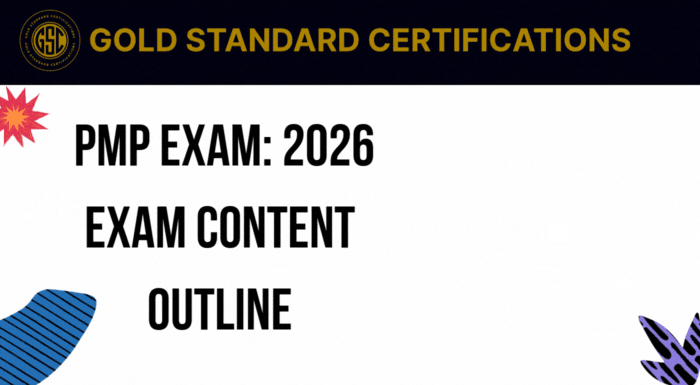50 Important Terminologies of Project Management
Project Management involves several terminologies that need to be known by the aspirants. Here are the 50 important terminologies of project management to be learned.

Every field of work has its terminologies used during work. Similarly, even project management has its glossary. This glossary contains several terminologies Which helps the team members in standardizing the project’s process. They use vocabulary specific to the field of project management. Here is the guide for those accounting for new project management terminologies: 50 Important Terminologies of Project Management.
These 50 important terminologies of Project Management are going to benefit both the team members and those aspiring to succeed in the field of project management. So, let's get started.
Learn about Project Management Terms
It is a common language that is used within the team of any project management-adapted industry or company. These Project Management Terminologies describe the work process, skills, tools, and that defines the requirement of the company. These terminologies are spread over project management, business management, personnel management, and other leadership areas.
Aspiring to become a project manager, go through the website GSC for exploring the certifications in project management.
50 Important Terminologies of Project Management
Now learn about the 50 important terminologies, which could help you strengthen your knowledge in project management:
1. Workplan
It is one of the key terminologies. The Work Plan is the outline of the project's goal. The aim is to complete the project as per the budget and schedule. The Work Plan includes all the tasks that are involved in the project.
2. Baseline
A baseline is used for measuring the performance of the project, which has 3 categories namely schedule baseline, cost baseline, and scope baseline.
3. Triple Constraint
It includes four components namely time, quality, scope, and cost. Where quality is the center for all other components. There has to be a balance of all these components for better outcomes.
4. Gantt Chart
It is the bar representing the scheduled information graphically. They are mainly useful for planning and scheduling. It can also be used for the sponsors to keep them updated about the project's progress.
5. Project Life Cycle
It includes the cycle/phases of project completion and those phases are planning, analyzing, implementation, design, and budgeting. The team should focus on each model to complete the deliverables of the project.
6. Change Management
It is the plan that includes the authority to either approve or reject the changes in the project. The project progresses upon previous requirements and statements, and if there are any changes, it has to get approved and the project manager would be able to modify it.
7. Risk Mitigation
It is very important to estimate the risk involved in the project. Risk Mitigation helps to identify the risk involved in the project. If risks are not identified, it can lead to project failure.
8. Assumption
They validate the result of the project. It is a practice to calculate the accuracy.
9. Activity
It defines timeline, development, and estimation. It puts a sequencing order for the project.
10. Stakeholder
They are the people who influence the project. For all the necessary information, they must be informed. The project must meet the expectation of the stakeholder.
11. Milestone
It is the best practice in project management to set a milestone, it is one of the components of the Gantt Chart, and you shall be able to see them on the project schedule. They are used for, starting phase, ending phase, and fixed dates on completion of phases.
12. WBS
It is the hierarchy to break down the workflow, the dividing process continues until the task is assigned to a single person in a hierarchical pattern.
13. Business Plan
It is the document that contains the details of project goals. The business plan and business strategies are the key aspects of a business plan.
14. Cost Estimation
Cost is the influential factor in the business run. The project schedule and duration impact the profit. Cost Estimation is used to calculate the cost of an entire project.
15. Contingency Plan
The Contingency Plan is nothing but the alternative plan for the project. It is for those risky situations that may or may not occur during the progress of the project.
16. Critical Path Method (CPM)
It is a step-by-step approach for analyzing the critical and non-critical tasks of the project. They are particularly used for scheduling, whether it is a short or critical path.
17. Certified Associate in Project Management
This is an entry-level project management certification, which is offered by Project Management Institution (PMI). It is designed for those aspirants, who have less experience.
18. Closing Process
It is used for the termination of projects. It is the term that denotes the completion of a project. It is the last step of the project.
19. DashBoard
It is an online platform to check all the necessary information related to the project. They are useful to check KPIs and monitor all the reports.
20. Deliverables
The required output is called deliverables. The best examples for deliverables are end product, report, document and also categorized as hardware and software.
21. Earned Value Management (EVM)
It is the methodology with three main aspects namely, actual work, project plan, and value. They denote the timeline and cost that is spent on the project. EVM is a process to schedule, measure and check performance.
22. Feasibility Study
It is the process of assessing the designed plan. They include activities like research, conducting polls, project studies, etc.
23. Human Resource Planning
They are responsible for identifying individual roles. They maintain a steady stream of employees to avoid a shortage of manpower for the project's progress.
24. Network Diagram
It is the chart indicating the flow of elements within the project. Based on the dependencies, it consists of elements from left to right.
25. PERT Chart
It is used for evaluating the reviews. They create, establish and organize the task. Network chart and Logistic chart can be created using PERT Chart.
26. Agile Project Management
It is a popular methodology for flexible working style. They divide the project into smaller cycles or also called sprints. It adapts the interactive approach to plan the project.
27. Backlog
It includes all the tasks that are required to complete the project. They track all the components in the project management, thereby helping managers to track the project's progress.
29. PRINCE2
It is the formal project approach, including the functions like Planning, Monitoring, and Controlling. It also handles budgeting for the project. It is a useful certification for those wishing to succeed in project management.
30. Bottleneck
A bottleneck indicates a problem in the workflow of a project. They cost a lot of money, if not identified in the initial stage. So, it is the role of the manager to identify the problem and to prevent them.
31. Change Control
It involves monitoring and carrying out requests. If any risks creep in or there are any uncontrolled changes, it relies on the hands of the manager for approval. This process ensures keeping the task within the original baseline of the initial stage.
32. Cost overrun
It is the unexpected cost, which arose during the project phases. The team must reallocate the resources to address the problem. Managers must continually monitor the cost to prevent overrun.
33. Dependencies
It is the factor influencing the successful completion of the project. It includes things like budget, cooperation between various departments, and client expectations.
34. Estimation
Estimation helps the team analyze the factor contributing to the project completion. Time, Money, and Manpower are the determining factors in the amount for estimation.
35. Hybrid Methodology
Hybrid Methodology merges the features of Agile Methodology and Waterfall models. It helps to maximize efficiency in a faster way. There will be high-quality deliverables.
36. Issue Management
It is the process of identifying and documenting the issues in the project cycle. It is important to solve the issue in the beginning itself, to prevent them from turning to larger ones. Issue Management helps to cut down the cost.
37. Issue log
Documentation of errors and bugs in the project cycle. It contains the details of the issue, for whom it is assigned, and all other relevant information for future study.
38. Kanban
Kanban is a scheduling system that adapts full transparency in work. The board allows to track every piece of work making it visible to all the team members, thereby improving work efficiency.
39. Lean Project Management
This management process prioritizes production and efficiency. This system of management maximizes production and reduces waste of resources. This way there is an increase in profit.
40. Project Budget
It is the revenue allocation for the completion of each project's phase. The comprehensive document helps to organize the budget and outlines the overall expenses for the project cycle.
41. Monitoring
Monitoring helps the team to determine whether the project could be completed within a given time and budget. It provides information for the client regarding the progress of the project.
42. Project timeline
It is the time allocated for completing the project. It ensures that the project stays within the budget. It gives a deadline for the team to complete the task.
43. Project Portfolio Management
It is used to analyze the objective of the company. It helps the project managers to understand the scope of the project and the company’s goal.
44. Quality Assurance
Quality assurance determines the quality of the product and whether it meets the requirement. It assures to produce the best quality product and as well maintaining the reputation of the company.
45. Resource Allocation
It is the delegation of the revenue for the completion of the project. It focuses on resource maximization to meet the project demands. It is the project manager who monitors resource allocation.
46. Resource Breakdown Structure
It lists all the resources for project completion. The breakdown of structure is based on the hierarchy and category which improves budgeting.
47. Resource Management
It involves planning, scheduling, budgeting, allocating, and managing resources for the timely completion of projects. Time, Cost, and Performance are the factors determining the goal of the project.
48. Scrum
It is Agile Technology which includes incremental steps for project completion. It uses sprints or short increments for tracking the progress of a project. It helps the team to become efficient and also other team members./48. Stand-up Meeting
They relay project progress throughout its cycle. Stand-up meetings are daily meetings that help to keep the team on the same track and focus on the tasks that are of high priority.
49. Waterfall Model
It involves sequential development, stage-by-stage until project completion. Unlike Agile Technology, it allows you to change tasks throughout the cycle.
50. Workstream
It is a collective form of tasks, They help in prioritizing the task, which has to be completed first. It is the role of the manager to workstream and allocate the resources accurately.














